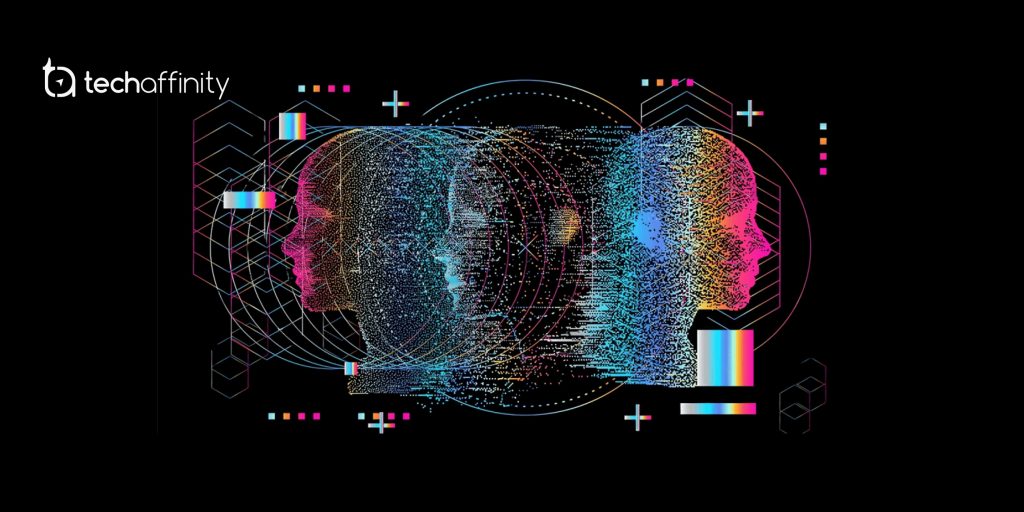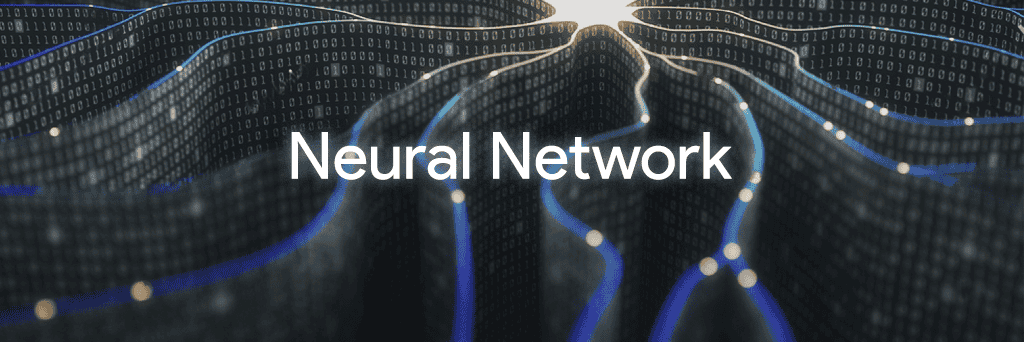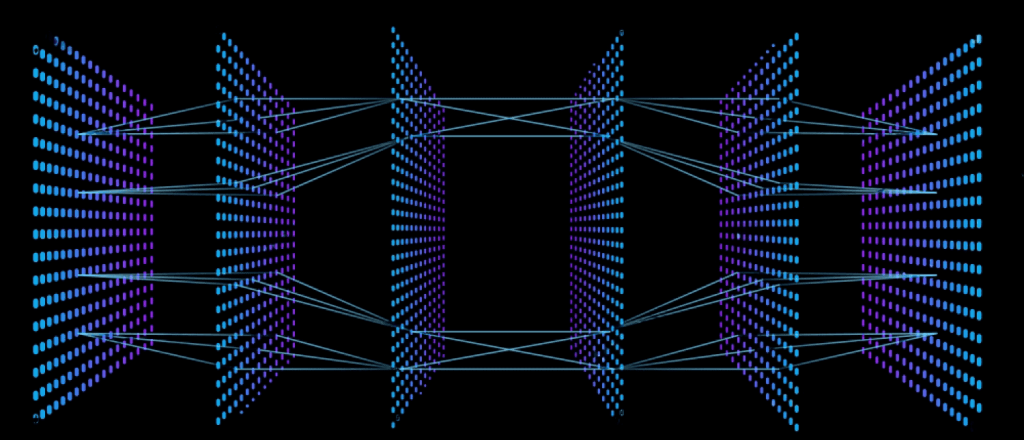What is Deep Learning AI? – A Comprehensive Guide

Author : Ben Kumar 13th Jul 2023

What is Deep Learning AI?
Deep learning, a branch of machine learning, relies on artificial neural networks incorporating representation learning. This technique, rooted in artificial intelligence (AI), enables computers to mimic the processing capabilities of the human brain when handling data. By leveraging deep learning models, intricate patterns within images, text, audio, and diverse datasets can be discerned, yielding precise insights and predictions.
In deep learning, the term “deep” pertains to the incorporation of multiple network layers. These layers are composed of artificial neurons, or nodes, arranged in a sequence of three layers: the input layer, the hidden layers, and the output layer. Data flows through each layer, wherein the output of one layer serves as input for the subsequent layer.
Deep learning algorithms acquire knowledge through example-based learning and have found application in diverse domains such as computer vision, speech recognition, natural language processing, machine translation, bioinformatics, drug design, medical image analysis, climate science, material inspection, and board game programs. Remarkably, in certain scenarios, deep learning has demonstrated outcomes that rival or exceed human performance.
What is the Relationship between Deep Learning, Machine Learning, and Artificial Intelligence

Deep learning, machine learning, and artificial intelligence form a cohesive trio within the expansive realm of computer science. Artificial intelligence (AI) serves as the overarching concept, encompassing the creation of intelligent machines capable of autonomous task execution. Machine learning (ML), a subset of AI, focuses on the development of algorithms enabling machines to learn from data and enhance their performance progressively. Deep learning (DL), in turn, represents a specialized branch of machine learning that employs artificial neural networks to model intricate data patterns and relationships.
To put it simply, deep learning falls under the umbrella of machine learning, while machine learning is a subset of artificial intelligence. The relationship between these concepts can be likened to concentric circles, with AI encompassing the largest circle, followed by machine learning, and finally deep learning.
AI covers a wide array of technologies and methods, such as natural language processing, computer vision, and robotics. Machine learning, as a subfield of AI, automates the process of learning from data and making predictions or decisions based on that data. Deep learning, as a subfield of machine learning, employs artificial neural networks to process and analyze vast quantities of data, allowing machines to recognize complex patterns and make more accurate predictions.
In summary, deep learning serves as a specific methodology within the domain of machine learning, which itself resides within the broader landscape of artificial intelligence. These interconnected technologies collaboratively facilitate the development of intelligent systems capable of autonomous operation, data-driven learning, and continual performance improvement.
Importance of Deep Learning in Today’s World

The importance of deep learning in today’s world is significant, as it has revolutionized various industries and applications. Deep learning, a subset of machine learning, uses artificial neural networks to model complex patterns and relationships in data, enabling machines to recognize complex patterns and make more accurate predictions
Some of the key reasons deep learning is important in today’s world include:
- Improved accuracy and efficiency: Deep learning models can process large amounts of data and provide real-time insights, leading to improved accuracy and efficiency in various applications, such as healthcare diagnostics, fraud detection, and natural language processing
- Automation: Deep learning enables the automation of tasks that were previously reserved for humans, such as image recognition, speech translation, and customer relationship management. This automation can save time and resources, allowing businesses to focus on other strategic areas
- Cost-efficiency: Deep learning can help businesses reduce costs by automating tasks, making use of unstructured data, and adapting to increasing amounts of data. It can also identify flaws in products or errors in code, reducing the costs of product-related accidents and recalls
- Innovation: Deep learning has led to groundbreaking advancements in various fields, such as self-driving cars, virtual assistants, and intelligent gaming. These innovations have the potential to transform industries and improve the quality of life for individuals
- Addressing complex problems: Deep learning can tackle complex problems that traditional machine learning algorithms struggle with, such as natural language processing, computer vision, and speech recognition. This ability to handle complex tasks has made deep learning a crucial component of many AI applications
Deep learning is essential in today’s world due to its ability to improve accuracy and efficiency, automate tasks, reduce costs, drive innovation, and address complex problems across various industries and applications.
Fundamentals of Deep Learning

Neural Networks
Neural networks are the foundation of deep learning. They are computational models inspired by the structure and function of the human brain. A neural network consists of interconnected layers of artificial neurons, also known as nodes. These nodes are organized into three main layers: the input layer, the hidden layers, and the output layer. Information is passed through each layer, with the output of the previous layer providing input for the next layer.
Deep Learning Architectures
There are several deep learning architectures that have been developed to tackle various tasks and problems. Some of the most popular architectures include:
- Classic Neural Networks: Also known as feedforward neural networks, these are the simplest type of neural networks. They consist of an input layer, one or more hidden layers, and an output layer. The nodes in each layer are fully connected to the nodes in the next layer, and information flows in one direction, from input to output
- Convolutional Neural Networks (CNNs): These networks are specifically designed for processing grid-like data, such as images. CNNs consist of convolutional layers, pooling layers, and fully connected layers. Convolutional layers apply filters to the input data to detect local patterns, while pooling layers reduce the spatial dimensions of the data, making the network more computationally efficient
- Recurrent Neural Networks (RNNs): RNNs are designed for processing sequences of data, such as time series or natural language. They have connections between nodes that form directed cycles, allowing them to maintain a hidden state that can capture information from previous time steps. This architecture enables RNNs to model temporal dependencies in the data.
- Long Short-Term Memory Networks (LSTMs): LSTMs are a type of RNN that can handle long-term dependencies in sequential data, making them well-suited for tasks such as language translation, speech recognition, and time series forecasting. LSTMs use a memory cell and gates to control the flow of information, allowing them to selectively retain or discard information as needed.
These architectures can be combined and customized to create more complex and specialized deep learning models for various tasks and applications.
Structure and Components of Neural Networks

Neural networks are computational models inspired by the structure and function of the human brain. They consist of interconnected layers of artificial neurons, also known as nodes. The structure of a neural network can be divided into three main layers: the input layer, the hidden layers, and the output layer.
Input Layer
The input layer represents the input data for the neural network. Each node in the input layer corresponds to one feature of the dataset. For example, in an image recognition task, the input layer may have nodes for the pixel values of the image.
Hidden Layers
Hidden layers are the intermediate layers between the input and output layers. They perform computations on the input data and help the neural network learn complex patterns and relationships in the data. The number of hidden layers and nodes in each hidden layer can vary depending on the complexity of the problem and the architecture of the neural network.
Output Layer
The output layer produces the final result or prediction for the given inputs. In a classification task, the output layer may have nodes representing different classes, while in a regression task, it may have a single node representing the predicted value.
Artificial Neurons
Artificial neurons, also known as perceptrons or nodes, are the elementary units in an artificial neural network. They receive one or more inputs, apply weights to them, and sum the weighted inputs. The sum is then passed through a non-linear activation function, which produces the output or activation of the neuron.
Connections and Weights
Connections in a neural network represent the links between nodes in different layers. Each connection has an associated weight, which determines the strength of the connection. During the training process, the neural network adjusts these weights to minimize the error between its predictions and the actual target values.
Activation Functions
Activation functions are non-linear functions applied to the weighted sum of inputs in a neuron. They introduce non-linearity into the neural network, allowing it to learn complex patterns and relationships in the data. Common activation functions include sigmoid, ReLU (Rectified Linear Unit), and tanh (hyperbolic tangent).
Popular Deep Learning Frameworks

1. TensorFlow: Developed by Google, TensorFlow is an open-source library for numerical computation and large-scale machine learning. It supports languages like Python and R and uses dataflow graphs to process data. TensorFlow is widely used for implementing machine learning and deep learning models and algorithms.
2. Keras: Keras is a high-level deep learning API developed by Google for implementing neural networks. It is written in Python and supports multiple back-end neural network computation engines, such as TensorFlow, Theano, and others. Keras focuses on being user-friendly, modular, and extensible, making it easy to build and experiment with deep learning models.
3. PyTorch: Developed by Facebook’s AI Research team, PyTorch is an open-source machine learning library based on the Torch library. It is designed to provide greater flexibility and increased speed for deep neural network implementation. PyTorch is popular among AI researchers and practitioners for its ease of use and ability to seamlessly switch between CPU and GPU computation.
4. Caffe: Convolutional Architecture for Fast Feature Embedding (Caffe) is a deep learning framework that supports various deep learning architectures, such as CNN, RCNN, LSTM, and fully connected networks. Caffe is popular for image classification and segmentation tasks due to its GPU support and out-of-the-box templates that simplify model setup and training.
5. Theano: Theano is an open-source numerical computation library for Python that allows developers to efficiently define, optimize, and evaluate mathematical expressions involving multi-dimensional arrays. While not specifically a deep learning framework, Theano is often used as a backend for other deep learning libraries, such as Keras.
6. Deeplearning4j (DL4J): Deeplearning4j is an open-source, distributed deep learning library for the Java Virtual Machine (JVM). It provides a high-level API for building and training neural networks and supports multiple backends, including TensorFlow and Theano.
7. Chainer: Chainer is a flexible and intuitive deep learning framework that allows users to define and manipulate neural network models on-the-fly using Python. Chainer supports various network architectures, including feedforward neural networks, recurrent neural networks, and convolutional neural networks.
8. MXNet: MXNet is an open-source deep learning framework that allows developers to build, train, and deploy deep neural networks using a variety of programming languages, including Python, R, Scala, and others. MXNet is designed for both efficiency and flexibility, making it suitable for a wide range of applications.
These deep learning frameworks offer various features and capabilities, making it easier for developers and researchers to build and experiment with deep learning models across different tasks and applications.
Applications of Deep Learning
Deep learning has a wide range of applications across various industries. Some of the popular applications include:
1. Healthcare:

Deep learning is used for medical research, drug discovery, and diagnosing life-threatening diseases such as cancer and diabetic retinopathy through medical imaging.
2. Personalized Marketing:
Deep learning algorithms can analyze customer data to create personalized marketing campaigns, improving customer engagement and increasing sales.
3. Financial Fraud Detection:

Deep learning models can analyze large volumes of financial data to detect fraudulent activities and protect businesses from financial losses.
4. Natural Language Processing (NLP):
Deep learning is used in NLP tasks such as sentiment analysis, machine translation, and text summarization, enabling machines to understand and process human language.
5. Autonomous Vehicles:

Deep learning algorithms are used in the development of self-driving cars, enabling them to recognize objects, navigate roads, and make decisions in real-time.
6. Fake News Detection:
Deep learning models can analyze text and identify patterns to detect and filter out fake news articles, ensuring the credibility of information.
7. Facial Recognition:
Deep learning is used in facial recognition systems for security, authentication, and identification purposes.
8. Recommendation Systems:
Deep learning algorithms can analyze user preferences and behavior to provide personalized recommendations for products, services, and content.
9. Speech Recognition:

Deep learning models can process and analyze audio data to convert spoken language into text, enabling voice assistants and other applications to understand and respond to human speech.
10. Computer Vision:
Deep learning is used in computer vision tasks such as image classification, object detection, and facial recognition, enabling machines to interpret and understand visual information.
These applications demonstrate the versatility and potential of deep learning in solving complex problems and improving various aspects of our lives.
Conclusion
Deep learning AI has revolutionized the field of artificial intelligence, enabling machines to learn and adapt in ways that were once thought to be impossible. As we continue to explore the potential of deep learning algorithms, we are witnessing groundbreaking advancements in areas such as natural language processing, computer vision, and autonomous systems. These advancements are not only transforming industries but also improving our daily lives by providing us with smarter and more efficient tools.
However, as we embrace the power of deep learning AI, it is crucial to address the challenges and ethical considerations that come with it. Ensuring data privacy, reducing biases, and promoting transparency in AI models are essential steps to foster responsible AI development. By fostering collaboration between researchers, developers, and policymakers, we can harness the potential of deep learning AI to create a more connected, efficient, and intelligent world.
As we look to the future, the possibilities for deep learning AI are vast and exciting. With continued research and innovation, we can expect to see even more remarkable breakthroughs that will reshape the way we live, work, and interact with technology. As a society, it is our responsibility to embrace these advancements while maintaining a focus on ethical and responsible AI development, ensuring that the benefits of deep learning AI are accessible and beneficial to all.
